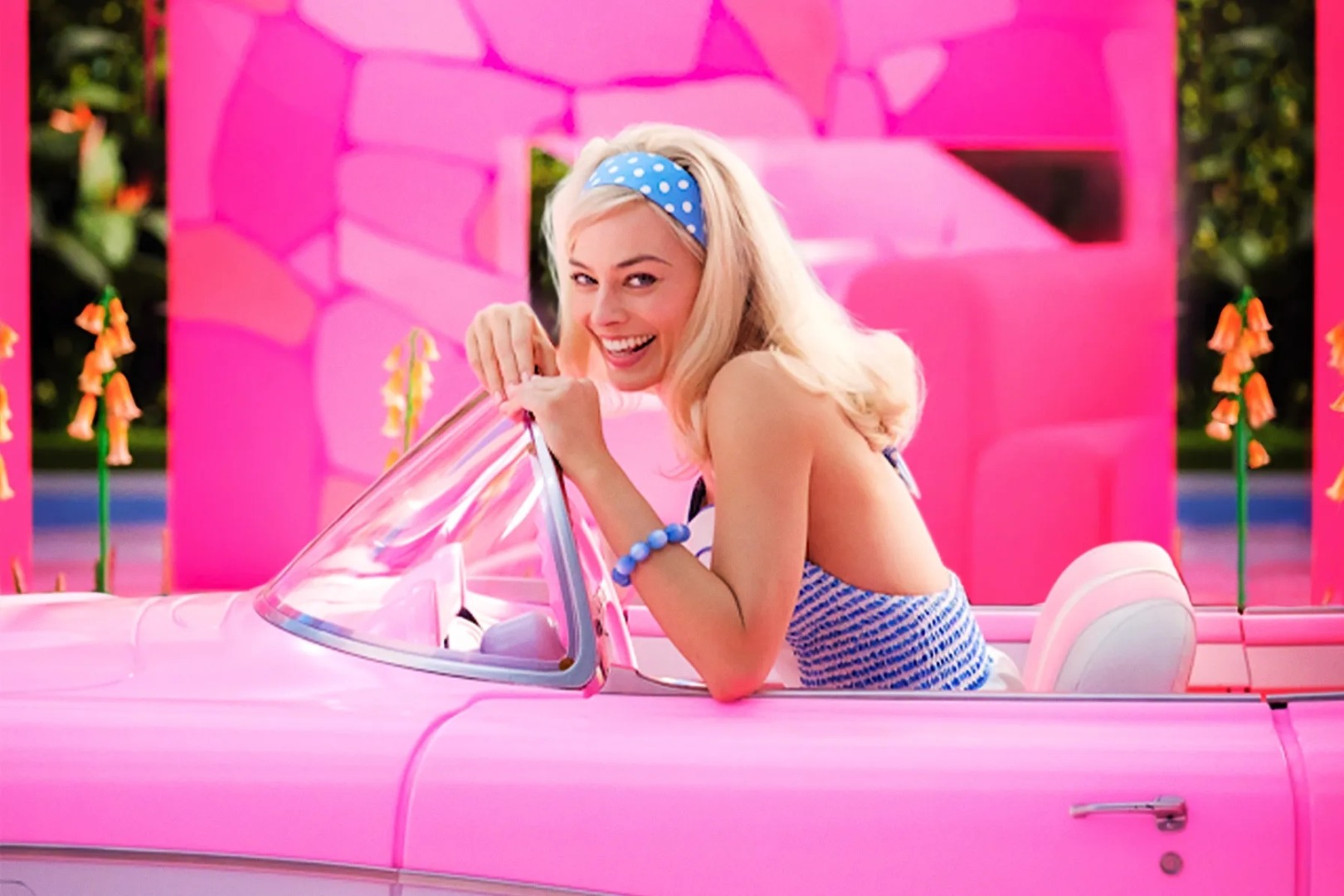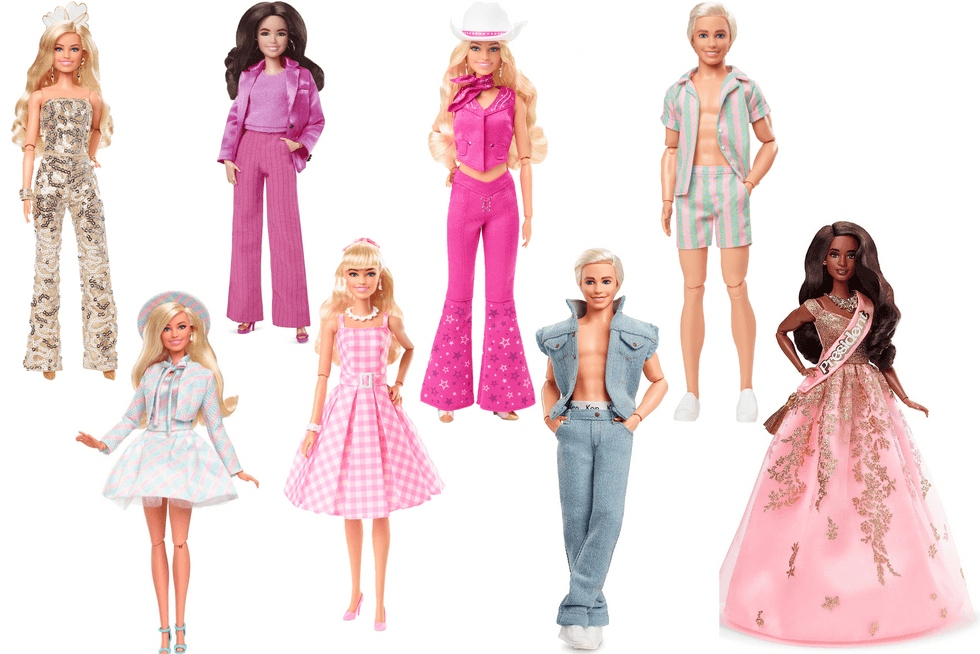Comments
- No comments found

Barbie, the iconic doll that has captured the hearts and imaginations of generations, is not just a toy – she's a symbol of innovation and empowerment.
Since her introduction in 1959 by Mattel, Barbie has evolved into much more than a plastic figure with stylish clothes and accessories. She has become a cultural icon that reflects the changing times, values, and aspirations of society.
Innovation has been at the core of Barbie's journey from the beginning. When Ruth Handler, the co-founder of Mattel, first conceived the idea for Barbie, she saw an opportunity to create a doll that allowed girls to envision their future possibilities. At a time when most dolls represented infants or toddlers, Barbie emerged as a teenage fashion model with a wide range of careers, from astronaut to doctor to CEO. This departure from the norm was revolutionary and provided young girls with a new lens through which they could envision their potential.
Over the years, Barbie's image and message have continued to evolve to reflect the changing societal norms and expectations. She has undergone numerous transformations, embracing diversity and inclusivity. Barbie now comes in a variety of body types, skin tones, and hair textures, challenging traditional standards of beauty and promoting self-acceptance. This commitment to diversity has resonated with people of all backgrounds, making Barbie more relatable and empowering for a new generation.
In the realm of innovation, Barbie has kept pace with technological advancements. From her early days, when girls used their imagination to create stories and scenarios, Barbie has now entered the digital age. The "Barbie Digital Dress" allowed young designers to create and display virtual fashion designs on a physical doll using LED lights and smartphones. This integration of technology and play not only enhances the creative experience but also prepares children for the digital world they are growing up in.
Furthermore, Barbie has embraced the power of storytelling and role-playing through various media platforms. The "Barbie Dreamhouse Adventures" animated series on television and streaming services brings Barbie's world to life, highlighting themes of friendship, problem-solving, and personal growth. These narratives resonate with young audiences, delivering messages of empowerment and inspiration.

Barbie's influence extends beyond the playroom. Her collaborations with real-world role models and organizations like "Barbie Sheroes" amplify the message of empowerment. Through partnerships with accomplished women from diverse fields, such as scientists, athletes, and artists, Barbie reinforces the idea that girls can achieve greatness in any domain they choose.
In a world that continues to evolve rapidly, Barbie remains a steadfast symbol of innovation and empowerment. She not only reflects the progress society has made but also challenges norms, paves the way for change, and encourages young minds to dream big. Barbie is not just a doll – she's an inspiration, a mentor, and a pioneer that continues to shape generations of individuals who believe in their potential and the power of their dreams.
Adult-Like Appearance: At a time when most dolls were babies or infants, Barbie displayed an adult appearance as a slim teenager or young woman. This was a novel concept in the toy industry. Barbie allowed girls to engage in imaginative play that went beyond just caring for baby dolls.
Fashion and Wardrobe: One of Barbie’s most significant innovations was her extensive wardrobe. Barbie was not confined to a single outfit but came with various clothing and accessory options. This encouraged creative play as children could dress her up for different occasions, fostering imaginative storytelling and role-playing.
Career and Role-Play: Barbie dolls often came with various career-themed outfits and accessories, showcasing a wide range of professions and aspirations. This innovation was significant in promoting the idea that girls could aspire to different careers beyond traditional roles, inspiring them to dream big and explore different paths.
Customizability: Barbie dolls allowed for customization through different outfits, accessories, and even different Barbie doll models (different skin tones, hair colors, etc.). This personalization aspect enhanced the play experience, allowing children to create characters that resonated with them.
Marketing and Branding: Barbie was one of the first dolls to be marketed as a brand rather than just a toy. This innovative approach included advertising campaigns, TV commercials, and tie-ins with other media. Barbie’s marketing strategy helped create a strong brand identity that contributed to its enduring popularity.
Cultural Diversity: Over the years, Barbie has attempted to reflect cultural diversity by introducing dolls with various ethnic backgrounds, skin tones, and features. This was an important step toward inclusivity and representation in the toy industry, though it has also faced criticism for not going far enough.
Interactive Playsets and Accessories: Barbie’s innovative playsets and accessories, such as dollhouses, vehicles, and play environments, allowed children to create immersive play scenarios. These accessories extended the play experience and encouraged imaginative storytelling.
Continual Evolution: Barbie has continuously evolved to reflect changing fashion trends, societal norms, and cultural shifts. This adaptability has contributed to Barbie’s longevity and relevance in different generations.
Digital Integration: In recent years, Barbie has embraced technology, incorporating digital elements like apps, games, and interactive websites that enhance the play experience and engage children in new ways.
Movie Extension: The Barbie brand was significantly enhanced and promoted with the 2023 movie, Barbie, starring Margot Robbie and Ryan Gosling. This is not a kiddy film, but a clever satire that amused adults and challenged gender stereotypes.
Barbie’s innovative features and extensions have made it a beloved toy but also a ground-breaking cultural icon that has influenced generations of children’s play and perceptions of gender roles.
Paul is a professional keynote conference speaker and expert facilitator on innovation and lateral thinking. He helps companies improve idea generation and creative leadership. His workshops transform innovation leadership skills and generate great ideas for business issues. His recent clients include Airbus, Microsoft, Unilever, Nike, Novartis and Swarovski. He has published 30 books on lateral thinking puzzles, innovation, leadership and problem solving (with over 2 million copies sold). He also acts as link presenter at conferences and facilitator at high level meetings such as a corporate advisory board. He has acted as host or MC at Awards Dinners. Previously, he was CEO of Monactive, VP International of MathSoft and UK MD of Ashton-Tate. He recently launched a series of podcast interviews entitled Insights from Successful People.
Leave your comments
Post comment as a guest